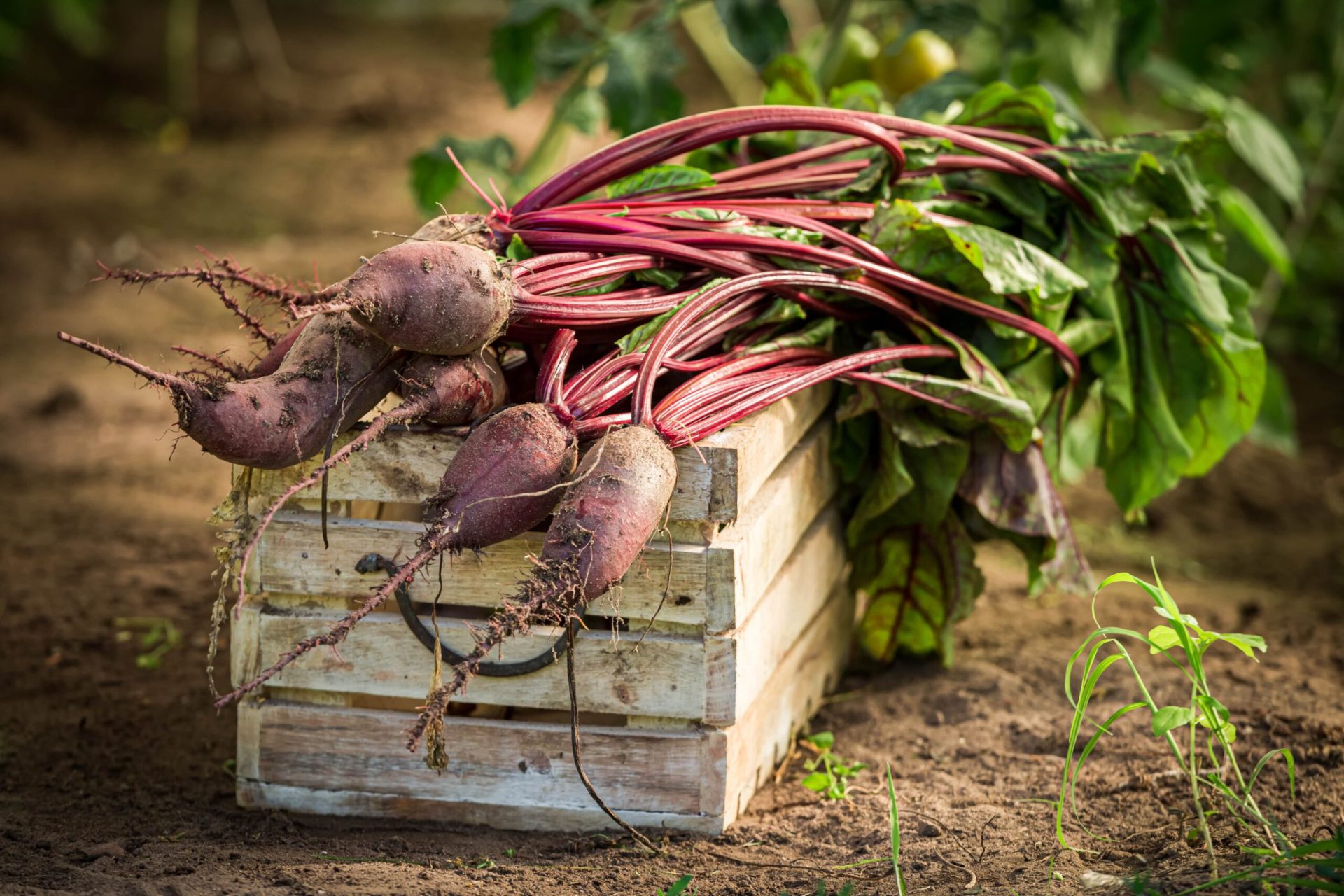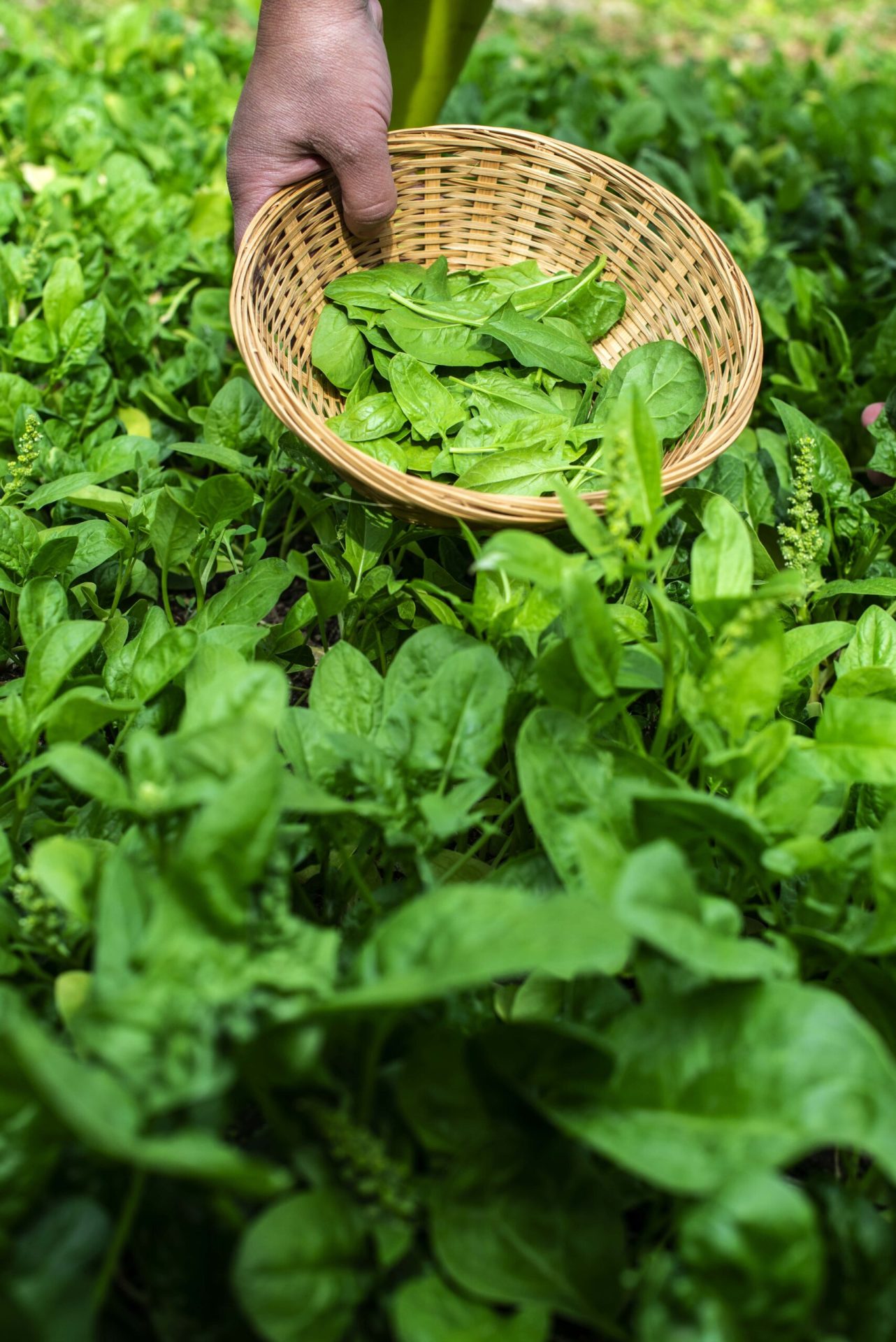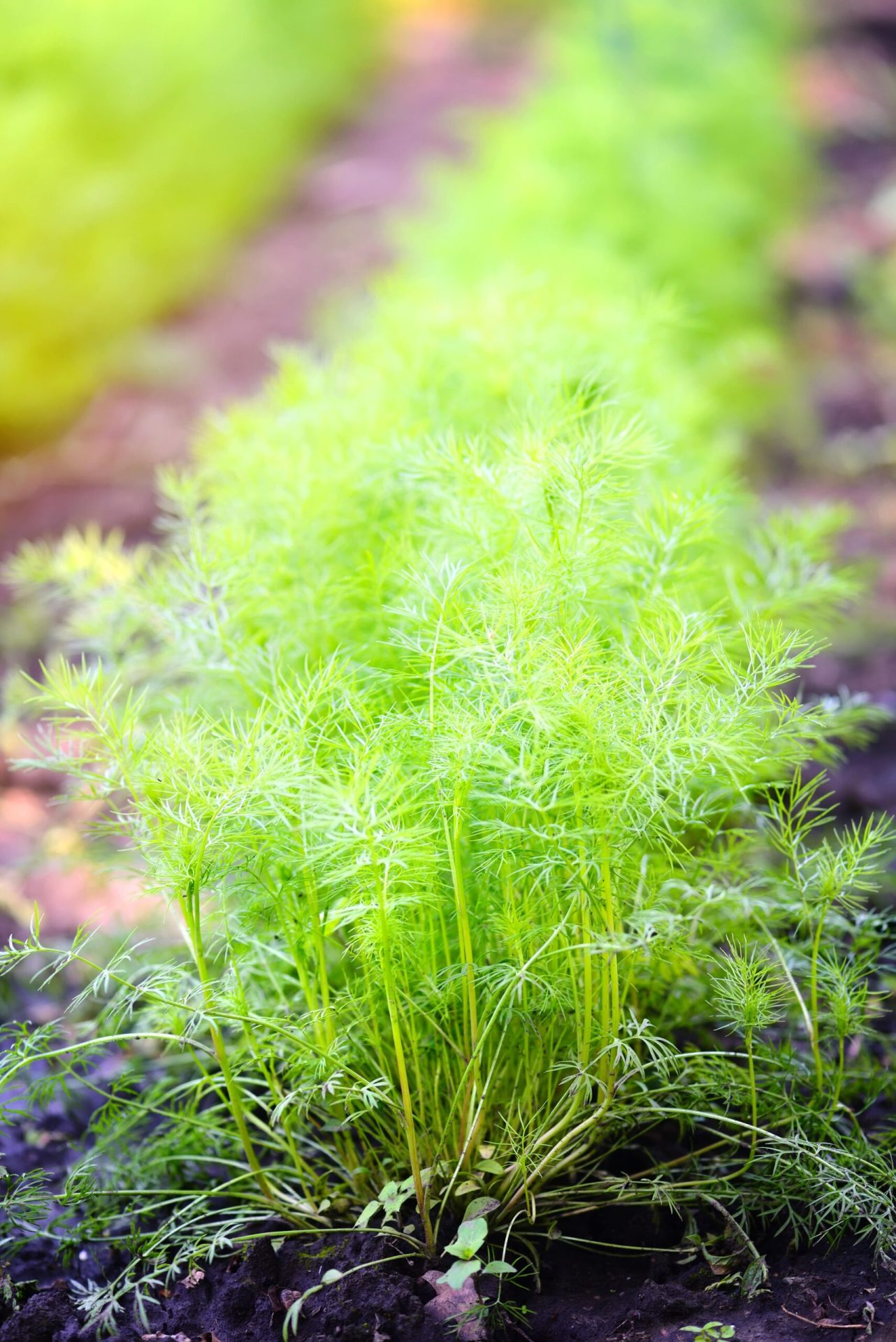Beets are sweet and packed with various beneficial compounds. This superfood tops the list of “perfect plants to grow for beginners” as they are easy to grow and prolific.
Want to grow beets in your garden? This growing guide provides step-by-step tips for growing beets from seed. We will walk you through growing stages, essential growing needs, harvest, storage and preferred beet varieties. Let’s sow the seeds of a ‘beetiful’ journey!
Growing Beets 101: Step-by-Step Guide
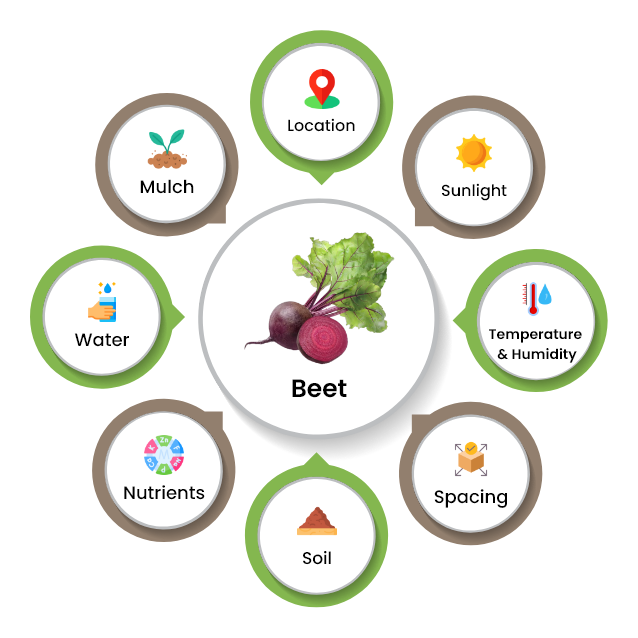
1. Location
Select a location that receives full sunlight. Ensure fences, trees, or walls do not shade your beet plants.
2. Temperature and Humidity
Beets are cool-season crops. They thrive well in temperatures between 50-75°F.
3. Spacing
Space your beet plants about 3-4 inches apart. Rows need about 12-18 inches spacing.
4. Soil
Beets grow well in fertile, loose, and well-draining soil. The soil should be neutral with a pH between 6.2 and 6.8 and rich in organic matter.
5. Nutrients
The best beet fertilizer has a high amount of phosphate and potassium but only minimal amounts of nitrogen. The NPK ratio for beets should be 5-10-10.
6. Water
Beets need 1 inch of water every week. Keep beet plants evenly watered to help them develop properly. Make sure the soil stays moist.
7. Mulch
Add a 2–3-inch layer of organic mulch like chopped leaves, hay, or straw around the plants. Keep it a few inches away from the base of the plant to prevent rot.
When and How to Plant Beets?
The best time to plant beet seeds depends on how and when you start them in your garden.
- For the best results, sow beet seeds directly in the garden in early spring, about two to three weeks before the last frost date.
- Sow beet seeds about 1 inch deep, with 1 inch between seeds in rows 10 inches apart.
- Cover seeds with a loose soil layer and gently water the seedbed.
- When seedlings reach a size of 3 to 4 inches tall, thin them to one plant every 3 to 4 inches.
Thinning is crucial as every beet “seed” is a cluster of several seeds. Young roots will only have space to grow and produce harvestable beets with seedlings.
TIP: Pre-soak seeds in warm water for an hour or overnight before planting them to speed up germination.
How do you grow beets from seed?
Growing beets from seed is easy and one of the best ways to grow a bumper crop. Seeds might take anywhere between 55-70 days to mature fully.
There are two ways to grow beets from seeds:
1. Sow beet seeds directly in the garden and let the plants grow for 6-8 weeks. Each beet seed produces 2-6 plants, which requires thinning.
2. Start seeds indoors or in a greenhouse about 5-6 weeks before transplanting.
How do you grow beets in pots and containers?
When growing beets in pots and containers, follow these steps:
- Select a container that’s 8 inches wide and deep. Ensure the container has sufficient drainage holes.
- Fill it with a potting soil mix containing organic matter like compost.
- Plant two to three beet seeds about a half-inch deep. Once seedlings emerge in 5 to 8 days, thin them, situate the growing beets in containers, and keep them in the full sun.
- Provide enough water and proper soil conditions, aeration, and excellent drainage for proper beet growth.
How to transplant beet seedlings?
Before transplanting the beet seedlings into the garden follow these steps
1. Amend the soil in the garden bed.
2. Dig a hole at the planting location, twice the width and about the same depth as the beet’s root ball.
3. Loosen the soil around the planting hole to improve root penetration.
4. Add a compost layer or organic matter to the bottom of the hole and lightly mix it with the excavated soil. After transplanting, beet seedlings obtain most of their nutrients from the compost.
TIP: Hardening off beet seedlings will help them adjust to the temperature when moving indoors to outdoors during transplanting.
Beets Growing Stages
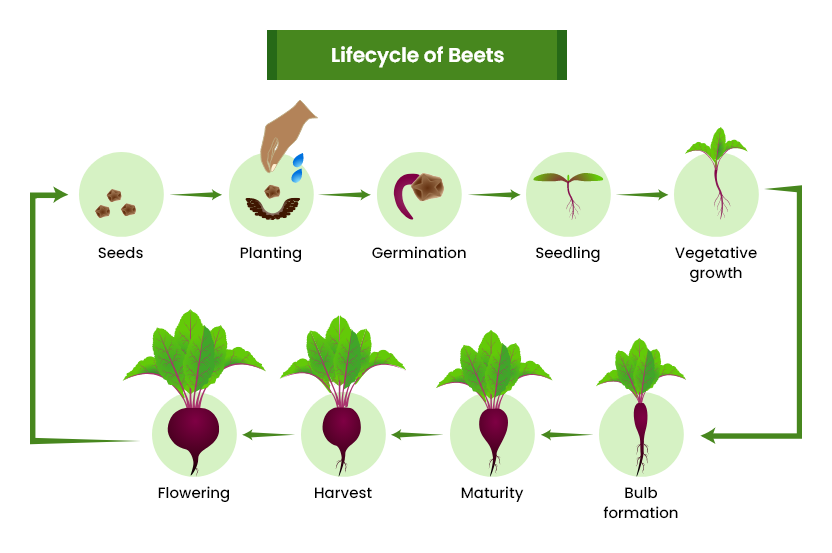
1. Planting
Prepare the soil by digging in aged manure or compost to enrich the soil. Sow beet seeds directly in the garden about two weeks before the last frost date. Plant the seeds about 1 inch deep and space them 1 to 2 inches apart. Ensure the soil temperature is 50°F before you plant beet seeds.
2. Germination
Depending on the soil temperature, beet seeds typically germinate 10-15 days after planting. The germination period may take longer if the soil is still cool.
3. Seedling
The plant’s root system and foliage begin forming when the seedling develops. During this stage, you should keep the soil moist but take care not to overwater. Check for weak or unhealthy-looking seedlings and snip back with sharp scissors. Depending on the variety and environmental conditions, the seedling stage lasts about 4 to 6 weeks.
4. Root development
Healthy beet plants develop round and bulbous roots, which grow significantly over time. Leave enough space for roots to expand by maintaining adequate spacing between plants. Apply liquid vegetable fertilizer to the soil at this stage to promote root growth.
5. Harvesting
Beets are ready to harvest when their root bulbs grow and reach a diameter of 2-3 inches. They will become woody and tasteless if left to grow and not harvested in time.
Harvest beets in 55 to 70 days after planting, depending on the variety you have grown and its growing conditions.
When harvesting beets, loosen the soil around the plants and pull them out by holding onto the leaves. You can eat the greens or remove them. Wash the beets thoroughly under running water.
6. Flowering
Being biennials in nature, beets flower and produce seeds in the second year of their growth. Beet flowers are tiny and pollinated by wind. They also attract insects, which helps in their pollination process.
7. Seed production
Small seed clusters will remain after the flower dies off. These seed clusters eventually dry out and turn brown. Crush these clusters in your hands and remove the chaff to get the seeds.
TIP: Store beet seeds in an airtight container to keep them viable for 2 to 3 years.
When Should You Harvest Beets?
You can harvest beets 55 to 70 days after planting. This is when their root tops reach a size of 1-1½ inches in diameter. However, their size should not exceed 3 inches.
The timing to pick beets depends on the type, planting date, and growing temperature. Personal preference also has an essential role in harvesting time. You should harvest beets before the ground freezes.
How to harvest beets?
- Pull beets when the soil is dry. You need to pull or lift roots from the garden bed carefully. Try not to break or injure roots.
- Use a garden hand fork, which helps loosen the soil around the roots before harvesting beets.
- Twist off the greens after you lift the roots.
How Should You Store Beets?
You should separate the green and leafy tops from your beets before storing them. Beet greens spoil faster than bulbs, so keeping them attached to the roots decreases their lifespan. To prepare fresh beets for storage, trim the greens, leaving 1 inch of the stem.
You can store fresh beets in the fridge for a long time, up to two weeks. Before using beets, gently rinse them with clean water. Avoid rinsing beets before you store them, as the excess water might cause beets to shrink and shrivel.
TIP: Use a vegetable brush to scrub any dirt or other particles off from beets.
Follow these steps to prolong the shelf life of beets and store them for later use:
- Place beets in a lidded container or zip-lock plastic bag to maximize their freshness. Before you seal the bag, remove the excess air from it.
- Store the beets in your refrigerator’s crisper drawer or in the coldest part of your fridge.
Best Beet Varieties
Different types of beet varieties exist, each with unique properties. Gardeners grow different types of beets, which come in different sizes, colors, and shapes. They also grow some beets for greens.
Beet varieties promise bountiful harvests and add an interesting range of colors to your home garden. Consider growing some well-known beet varieties in your garden.
1. Ruby Queen
People consider planting this beet variety for its consistent growth. Its roots are smooth and round, with an even red interior. If you desire beet varieties for canning, then Ruby Queen tops are one of the best options for canning beets.
It has a sweet yet mild and pleasant flavor, which thrives well in almost all conditions. It proves an excellent choice for home food preservers and home gardeners.
2. Bull’s Blood
This beet variety produces burgundy-purple leaves instead of typical greens. Gardeners grow this variety of beet for salads as they are of the right color and of great size. It has smaller roots than other beet varieties and measures about 3-4 inches. It takes around 58 days to reach its full maturity size.
3. Chioggia
They call this beet “Bull’s Eye Beet” or “Candy Stripe.” A special type of beet that many gardeners like to grow. This striped beet variety has a soft and sweet taste with red-white rings inside.
It takes around 50 days to mature fully. It has medium-high leaves with green stems and red shading.
Common Pests and Problems with Beets
When growing any vegetable, taking care of the crop throughout its growing stages is essential. This will result in an excellent harvest, but you also need to watch out for pests and diseases. To keep your crops safe from pests, implement preventative measures in place.
Bugs and diseases can damage beets. Some of these include aphids, beetles, maggots, slugs, leafhoppers, and wireworms. Diseases like bacterial blight, scab, mildew, leaf spot, and root rot can affect the growth of beets.
Companion Plants with Beets
Beets have several companion plants, like onion, beans, lettuce, cabbages, radishes, catnip, garlic, brussels sprouts, mint, and carrots. Even though beet plants occupy maximum space, you can grow them with companion plants to maximize your harvest. These companion plants support beneficial insects, fungi, soil-building creatures and discourage pests from feeding on crops.

